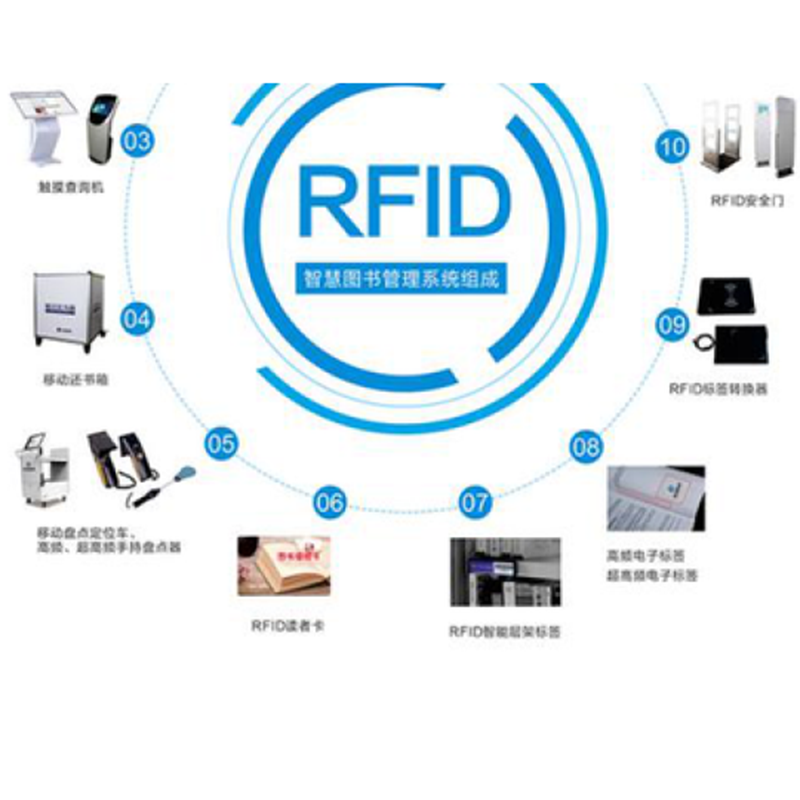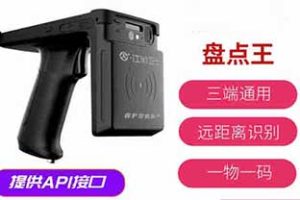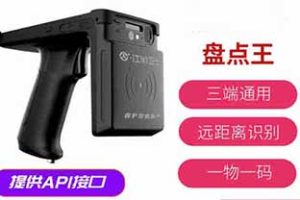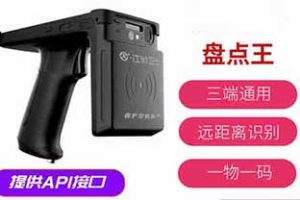Introduction and application of RFID chip for electronic tag
1. The world’s smallest chip
In June, 2001, when Hitachi published the microchip, it said that the component was the smallest RFID chip in the world. In November, 2003, Hitachi has developed a method to embed the antenna into the RFID chip. Hitachi proudly said that the device is the smallest IC with an embedded antenna. Conventional RFID chips need an external antenna to communicate with the external reader, while the chip antenna of microchip enables it to receive the wireless signal from the reader and return the ID number. Therefore, the chip can work without any external devices.

2. Chips that meet global specifications
Philips Electronics launched ucodepc1.19, the industry’s first RFID chip conforming to global rules, in May 2004, to support the UHF global product electronic code (EPCglobal) standardization campaign. The new chip is used for pallet and packing case identification, and supports the standardization of 96 bit EPCglobal code, which can help retailers and suppliers meet the requirements of class G2 EPCglobal standards in the shortest time. With Wal Mart, Metro, Tesco, target and the Ministry of Defense’s requirements for logistics and supply chain systems in 2005 to achieve contactless radio frequency identification (RFID) technology, manufacturers around the world are looking for ways to quickly and effectively deploy for their supply chain.Methods of RFID technology The retail and supply chain users of the chip can make full use of 256 bits when needed
Read/write memory stores additional information on the chip. With a single chip with this function, EPC architecture can be widely used in logistics, supply chain and other industries around the world. Ucodeepc1 is now in use. 19 can be found in American Standard 5. 7m (write)/8.2m (read) and European standard 5.2m (write)/7. Operate within 4 meters (reading). The chip has a collision free speed of 150 labels per second.
RFID solution
SSA Global’s SSA warehouse management radio frequency identification (RFID) solution for Wal Mart and the U.S. Department of Defense (DoD) has achieved initial customer results. RFID technology is the foundation to help customers improve the visibility of the supply chain. It is also the foundation of SSA Global
The cornerstone of Supply Chain Management (SCM) solutions. SSA Global’s RFID products will help manufacturers and distributors improve material handling efficiency, so as to more efficiently manage and track the flow of materials. SSA RFID for distribution is one of the first RFID solutions for warehouse management and manufacturing
Introduction and application of RFID chip for electronic tag
At present, RFID has shown reasonable value in some fields, such as asset tracking, car license plate and security. For example, DC logistics, which runs SSA RFID for distribution in its Dallas RFID deployment center, has greatly improved its automatic data collection and analysis function. While Wal Mart uses the RFID test distribution center to dispatch cargo ships to respond to customer requirements and promote the system compliance of Wal Mart, DOD and other institutions. In addition, other functions, including labeling service and cross terminal consolidation service, will also make the solution the first all-round product.
SSA RFID for distribution is built to meet the industrial needs of consumer goods and direct warehousing and distribution companies. SSA global is currently working with IBM, Sun Microsystems, R4 global services and SIS technologies, Ltd. And other major business partners to build a solution aimed at fully tapping the potential of RFID.

Introduction and application of RFID chip for electronic tag
Oracle also launched the latest version of supply chain management software including RFID technology – Oracle supply chain management 11i. 10 (Oracle supply chain management 11i.10). RFID transaction can automatically track the inventory flow in the whole supply chain to improve transparency, security and decision-making ability Robert moon, chief information officer and vice president of Information Service Department of ViewSonic, said: “our supply chain affects all aspects of the company’s daily operation,
Therefore, it will ultimately affect the realization of various goals of the company, such as providing unparalleled customer service, increasing opportunities for revenue growth, simplifying the main supply and demand process, and so on. We are very interested in the latest version of Oracle supply chain management, and believe that it will play a vital role in our implementation of some more advanced business plans, such as RFID inventory management, global order fulfillment process, new customer relationship and partnership management, to achieve the overall goals of the company.
Introduction and application of RFID chip for electronic tag
3、 From barcode to RFID
The origin, development and history of bar codes in the Smithsonian Museum of American history in Washington, a pack of Wrigley juice gum is displayed. On June 26th, 1974, this bag of gum sold for 67 cents at Massey supermarket in Troy, Ohio. You might say, what’s so rare about this? But it is the first product sold through bar code scanning in the world.
origin
Back in the 1940s, Joe? Joe wood land and Bernie? Berny silver, two engineers, began to study the use of codes to represent food items and the corresponding automatic identification equipment, and obtained a U.S. patent in 1949. This pattern is very similar to the miniature archery target, which is called the “bull eye” code. The concentric circle of the target type is drawn into a circle by a circle bar and an empty space. In principle, the “bull eye” code is very similar to the later barcode. Unfortunately, the technology and commodity economy at that time were not able to print this code However, 10 years later, Joe? As an engineer of IBM, woodland became the founder of the North American unified code UPC code. With Gillard? Several inventors represented by Girard Fessel filed a patent in 1959, describing that each number in the number 0-9 can be composed of seven parallel bars. But this kind of code makes it difficult for the machine to read and inconvenient for people to read. However, this idea did promote the generation and development of bar codes.

Introduction and application of RFID chip for electronic tag
develop
In 1973, the United States unified coding Association (UCC) established the UPC bar code system and realized the standardization of the code system. In the same year, the grocery industry took UPC code as the general standard code system of the industry, which played a positive role in promoting the wide application of bar code technology in the field of commercial circulation and sales.In 1974, David? Dr. David allair developed code 39, which was soon adopted by the US Department of defense as a military bar code system. Code 39 is the first alphanumeric bar code to be combined, which was later widely used in the industrial field.
In 1976, the successful application of UPC code in supermarkets in the United States and Canada gave people great encouragement, especially in Europe. The following year, the European community developed the European article code EAN-13 and ean-8 on the basis of UPC-A code, signed the memorandum of agreement on European article coding, and officially established the European article coding Association (EAN). By 1981, EAN had developed into an international organization, so it was renamed the “international article coding Association”
However, due to historical reasons and habits, it is still called ean (later changed to ean International)
Japan began to establish the POS system in 1974, studying standardization, information input methods, printing technology, etc. On the basis of ean, the Japanese article code Jan was formulated in 1978. In the same year, he joined the international article coding Association, began to register manufacturers, and fully transferred to the development of bar code technology and its series of products. Ten years later, he became the largest user of EAN
NFC
Introduction and application of RFID chip for electronic tag
application
Shortly thereafter, with the continuous development of LED (light emitting diode), microprocessor and laser diode, there was a big explosion of new identification symbols (symbolism) and their applications, which was called “bar code industry”. Today, few companies or individuals can be found without direct contact with the fast and accurate bar code technology. Due to the rapid technological progress and development in this field, and more and more application fields are developed every day, it will not be long before bar codes will become as popular as light bulbs and semiconductor radios, making everyone’s life easier and more convenient.
Introduction and application of RFID chip for electronic tag
Comparison between RFID and barcode
At present, hundreds of billions of large and small commodities in the world are identified by lines of different thickness (bar codes) on the products. However, bar codes can only record the simple background of the products, such as the manufacturer and item name, and the data can only be read through infrared contact scanning. More importantly, at present, the world produces more than 500million kinds of goods every year, and the universal bar code for goods in the world, which is arranged by 12 digits, is almost used up. The barcode is read-only, needs to be aligned, can only be read one at a time, and is easy to be damaged; RFID is rewritable, does not need to be aligned when using, can read multiple at the same time, and can be used all day long, without manual operation.

First of all, the bar code relies on the passive manual reading method, and the staff need to scan one by one with the handheld reading device, while the RFID reading device can automatically and instantly read a large number of volume label information using radio waves;
Secondly, bar codes are fragile labels, which are easily faded and torn due to physical and chemical reasons. RFID is an electronic product and can be used in harsh environments;
Third, the storage capacity of bar code is very small, while the RFID tag is embedded with storage devices, which has a huge amount of information; Of course, the problem with barcode is that it is always one-time and unchangeable, and RFID can be written or modified at will
IV – prospect of RFID and RFID standards
How to manage kangaroos with a larger population than Australia? How to track things launched into space? How can the doctor detect and obtain the first-hand EEG and ECG data when the patient does not go to the hospital? How to deal with the large number of worn and damaged bar codes in supermarkets These problems seem difficult and have no inevitable connection, but RFID technology can solve the above problems.
Introduction and application of RFID chip for electronic tag
The prospect of RFID of course, the novel applications of RFID technology are also emerging in an endless stream. For example, Nippon Telecom recently began to equip the workers in the company with PDAs with RFID readers to read the RFID labels on the phones, so that the headquarters can draw a map of the current position of the workers according to the information collected from the workers’ PDAs, so as to dispatch the workers nearest to a certain phone to work.
RFID tag anti theft application
In the medical field, RFID technology also has great potential. For example, each medical device is loaded with RFID, which can avoid leaving scissors and pliers in the sutured body; Or use RFID tags to mark each patient who will undergo surgery to ensure that their identity is consistent with the operation process.
In Japan, a community has put forward a plan to use RFID tags to track the situation of children in and out of school, so as to meet the growing concern about the safety of children in school. According to Osaka Telecommunications Bureau, RFID tags will be distributed to primary schools and sewn on students’ clothes or personal items such as student cards and schoolbags; The RFID tag reader will be installed at the school gate and other places that parents and teachers think are more dangerous. Every day, the data on the RFID label is sent to the central database through a wireless connection, so that the actions of children carrying the RFID label can be tracked in real time or quasi real time. The data obtained from the RFID volume label will be displayed in various forms of icons. In addition to recording the location, more intelligent volume labels will be used to record the accompanying events in the future
Introduction and application of RFID chip for electronic tag
Several major mobile phone manufacturers plan to launch communication devices embedded with RFID technology. They hope to change the way consumers buy goods and use credit cards. With the help of NFC technology, for example, you can complete the transaction by shaking your mobile phone to a poster or advertising billboard (within 20 cm). Whether you buy tickets for concerts, book hotel rooms or other businesses requiring credit card account information, you can use mobile phones and other portable devices. According to the survey of ABI Research Institute, 50% of mobile phones will be integrated with RFID chips for short-distance communication within a few years. These transactions are fool like and do not need to be configured by users. That is to say, through the wireless communication network, Wi Fi network with NFC function or Bluetooth technology, the RFID tag in the handheld device will automatically connect to the corresponding site, so that consumers can understand the information about products and services, transmit video and audio files, or conclude a transaction. RFID has such close to life applications, visible prospects are immeasurable
RFID
Introduction and application of RFID chip for electronic tag
Practical problems of RFID
But we can not ignore the reality of RFID:
1. high risk
The high cost of RFID and the immaturity of technology make the implementation of RFID still a high-risk move. Some people even think that the so-called RFID application boom is a crazy technology that lacks proof of investment return Although the industry still maintains a positive attitude towards the long-term prospect of RFID, Gartner said that the basic commercial strategy of applying this technology still needs many years to mature. It took 20 years for enterprises to effectively use bar code technology in business management and supply chain. Although the popularization of RFID technology will not take that long, enterprises need to constantly check the strategy of adopting this technology and realize that RFID cannot become the mainstream technology in one night.
2. the price is too high
The price issue is also a major focus of debate about RFID. Experts believe that in order to implement this technology, the price of the label must be reduced from 45 cents to 10 cents each. The price must be cheap enough for more companies to use, and now the industry is moving towards this trend. Many people are still concerned about how low the price will eventually fall and when it will reach the lowest point.
Introduction and application of RFID chip for electronic tag
3. inconsistent standards
At present, the software and hardware technologies provided by many RFID solution manufacturers are still in the stage of laboratory and simulation application, and can not meet the needs of practical applications. If enterprises adopt special technology, the frequency, coding, storage rules and data content used are all different. Once the RFID reader and tag are not universal, the data exchange and collaboration between enterprises cannot be carried out smoothly, and the RFID technology can only be limited within the enterprise
It is precisely because of the lack of a set of widely used standards that RFID technology has not been widely used in supply chain management. When the data of one link of the supply chain can not be reused in the next link, the cost of technology development will increase significantly. It can be seen that a detailed, unified and open technical standard is the top priority for the development of RFID technology.
Introduction and application of RFID chip for electronic tag
4. unemployment
A research report recently released by Yankee Group, a market research company, shows that enterprises will invest billions of dollars in installing inventory tracking systems in the next three years, which will enable them to save costs due to the improvement of supply chain efficiency, but millions of workers will lose their jobs. Yankee Group said that manufacturers will invest $5billion in hardware, software and services related to radio frequency identification (RFID) in the next three years. However, the deployment of RFID in the United States alone may lead to the disappearance of 4million jobs.
5. health impact
At present, many people are worried about the spread of RFID in the future world, because the 800~900mhz used by the RFID magnetic stripe already belongs to the very high frequency range. Many people worry that living in the RFID magnetic stripe for a long time will be affected by high-frequency rays, and the decline of immunity and cancer have caused many people to question RFID. And the frequency used by RFID is also limited by the frequency resources of the International Telecommunication Union
6. privacy issues
Privacy groups also have strong opinions that RFID may cause manufacturers to track users for a long time. Once the disposable self destruct RFID is used, customers are likely to be unable to participate in services such as recall and discount refund.
7. RFID standard
All countries are actively developing their own RFID standards. Three international standards, namely iso/iec18000, EPC global of the United States and ubiquitous ID of Japan, have formed a tripartite situation. Wal Mart officially announced last year that from 2005, all products in the world’s top 100 suppliers will be forced to affix “electronic labels”. The u.draft and formulate relevant “electronic volume labels” in China National standards, so that it not only has China’s independent intellectual property rights, but also is compatible with the current international standards, so as to promote the development of China’s “electronic volume label” into the track of standardization and standardization.
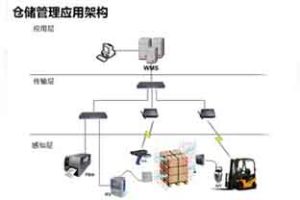
Wangzhongmin, deputy director of China’s National Standardization Administration, said: “China will play an important role in the formulation of EPC international standards.
Donglai precision electronics, mainly engaged in RFID tag | RFID | RFID tag | RFID technology | RFID reader | RFID asset management system | RFID card | RFID equipment | electronic tag | RF tag | high frequency tag | library RFID tag | automatic identification technology solution
We will provide you with 1v1 technical consulting service free of charge! We have a 3000+square meter R&D center in Shenzhen Guangming pilot industrial base, and our R&D center has 12+laboratories. With strong R&D strength, we are a manufacturer you can trust. Welcome to call us for advice. Please contact us for free samples!


